The season's first freeze is happening right now in the Ozarks, and the beds in this year's winter vegetable garden are ready for it with their new greenhouses.
Every year I go around the garden and gather up the various building materials to make little greenhouses for the winter vegetables. Using what is available around the garden, these makeshift greenhouses tend to have a unique look when they are done.
With frost finally in the forecast for the weekend, it was time to build those mini-greenhouses over these winter beds.
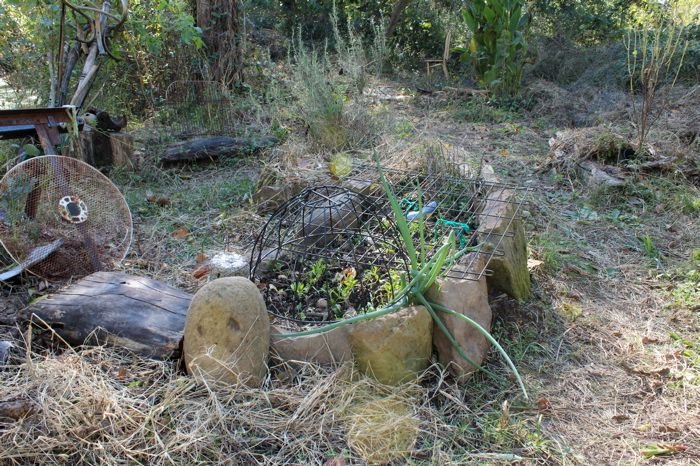
Spinach, chard and kale, all planted weeks earlier, would all get their own houses, beginning with the spinach house.
Spinach House
Racks, grates and grills always have a use in the garden, protecting the sprouts from being eaten or trampled in the beds:
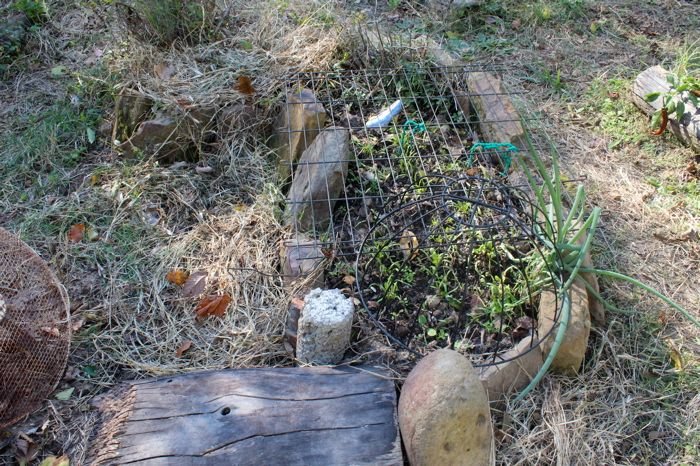
These racks can also be used as the framework of a miniature greenhouse:
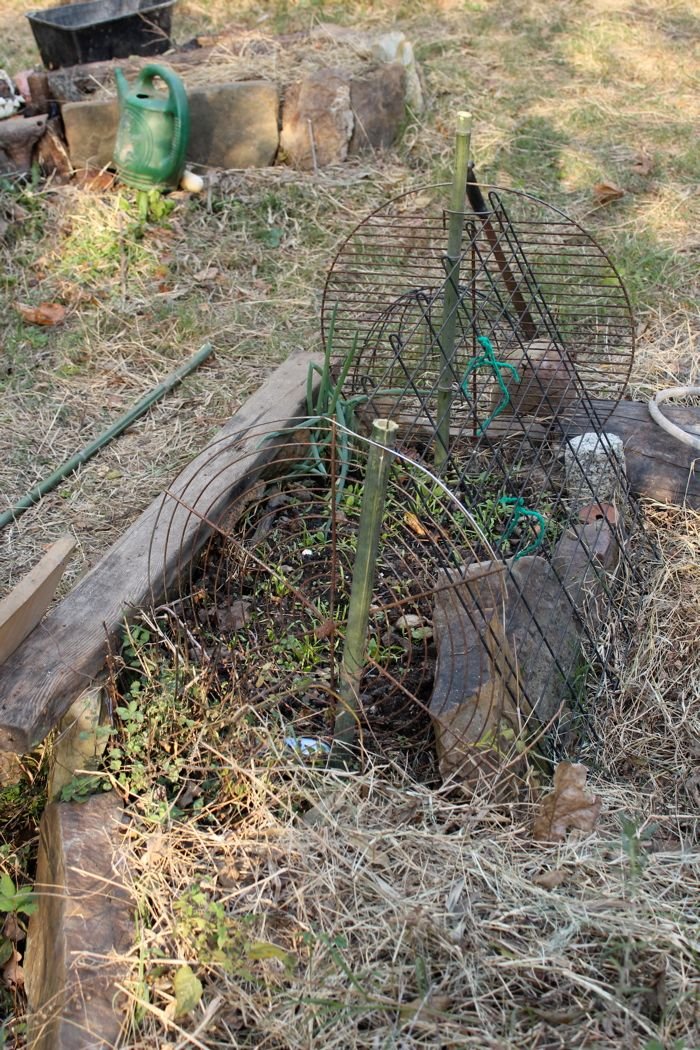
The frame is wrapped in plastic sheeting, leaving a door for watering and picking leaves:
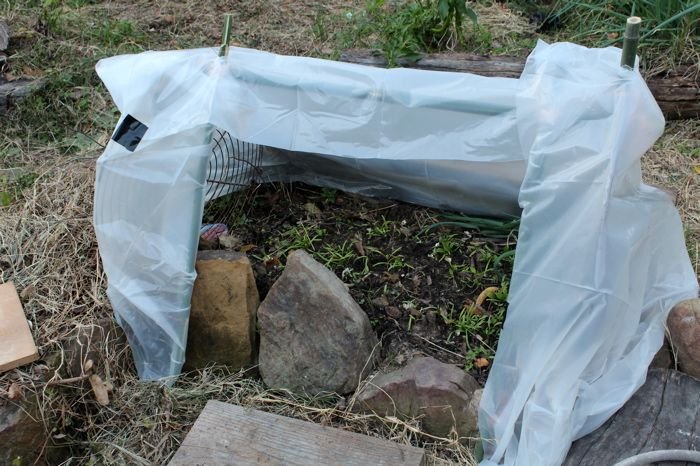
Another rack is wrapped in plastic for the door, finishing the spinach house:
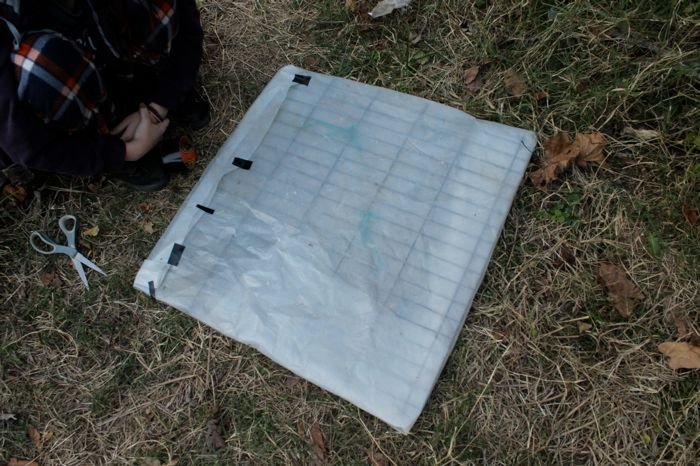
Next Structure was the Kale House
The construction of the kale house was going to require some more bamboo, so I went into the mysterious bamboo forest that darkens the edge of the maples beyond the pond to cut a few stalks.
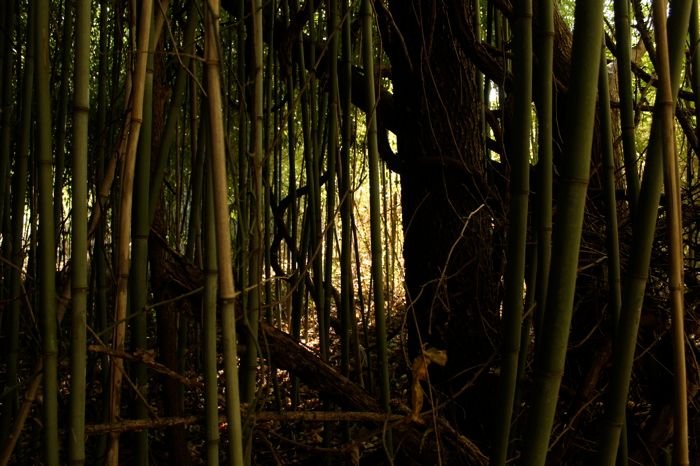
This is the larger kale bed before the house was built around it:
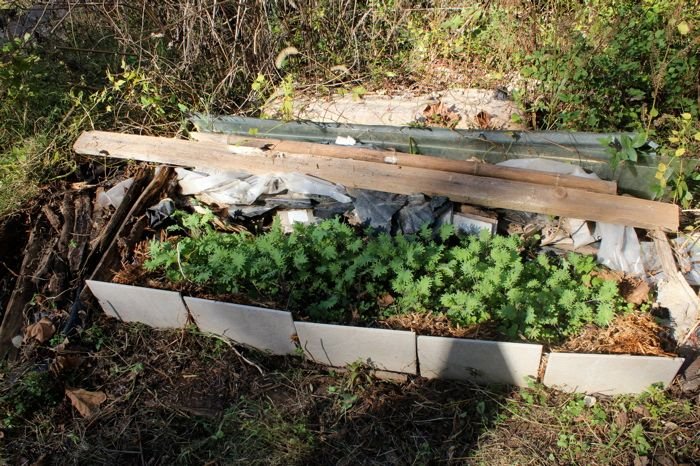
Bamboo frame is started:
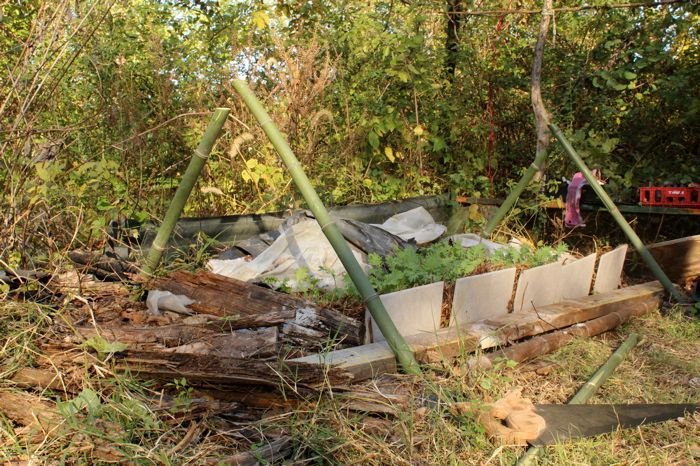
A complimentary pink yarn to tie the bamboo is selected.
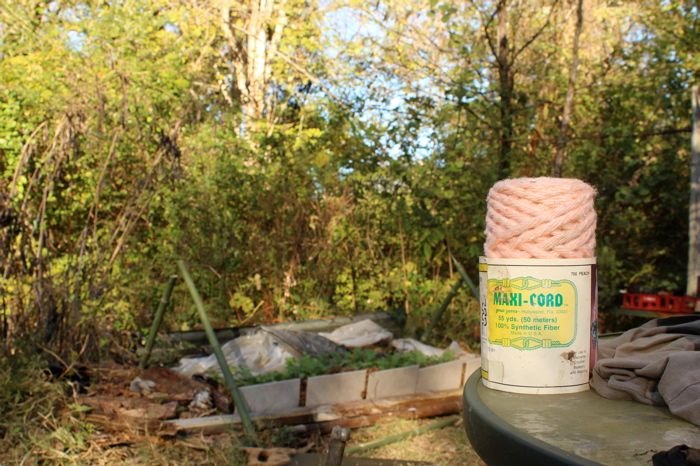
No time for scissors-- machete cuts faster:
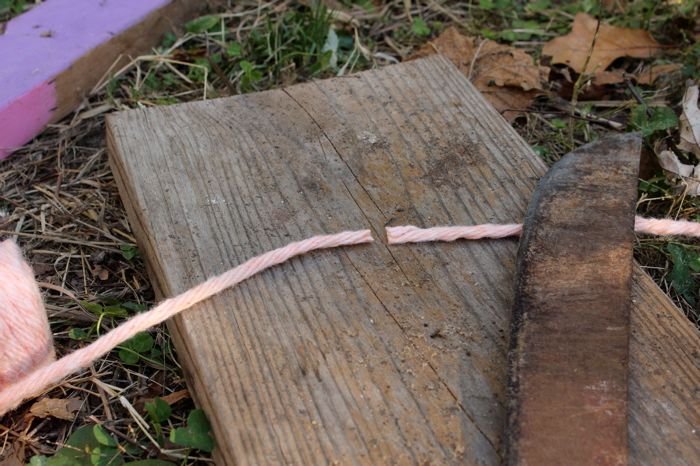

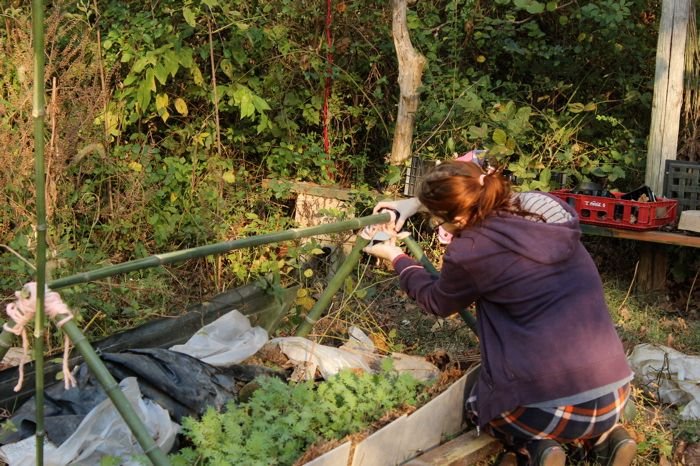
Finally the plastic wrap goes over the frame, to be pinned down and further insulated later with more logs and rocks as needed. A plastic drape door is devised for this house.
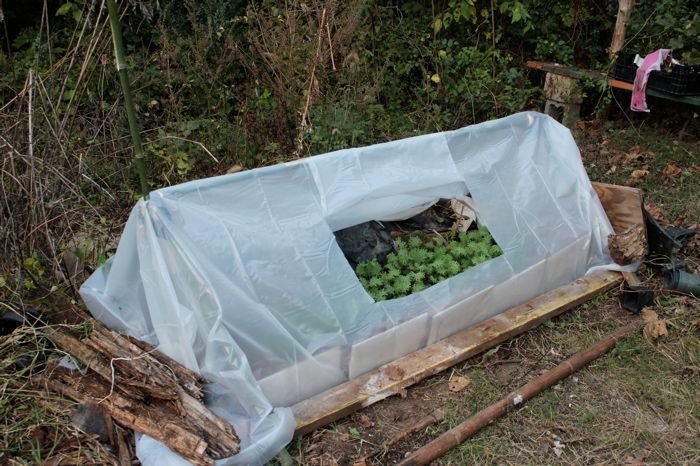
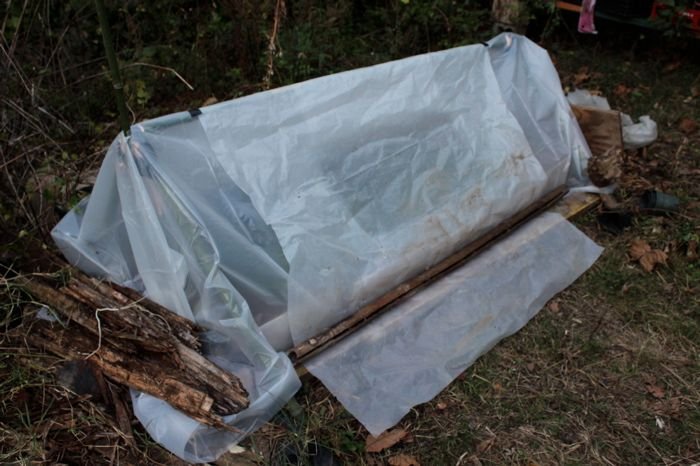
Another smaller bed of kale, needing a quick house
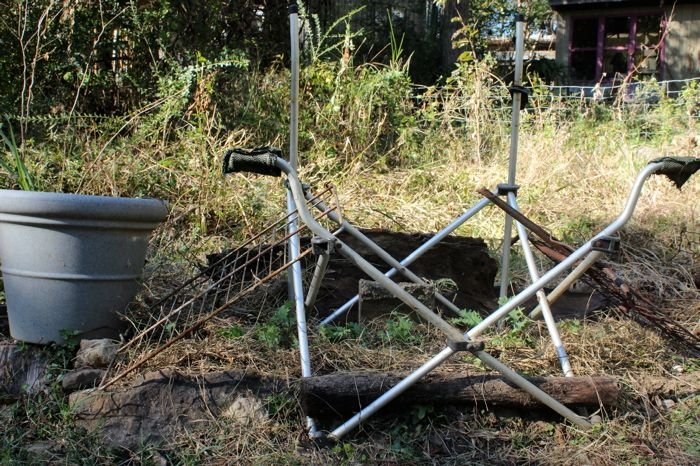
This smaller bed of kale transplants gets a frame made from an old camping chair, and will be equipped with a passive solar heater. When possible, I'll put a stone or brick inside the structure to retain heat from the days sun, to then share that warmth with the plants at night. The dense stone or brick will store heat for quite a while after sunset, and can make a big difference to the plants that are near it on a cold night.
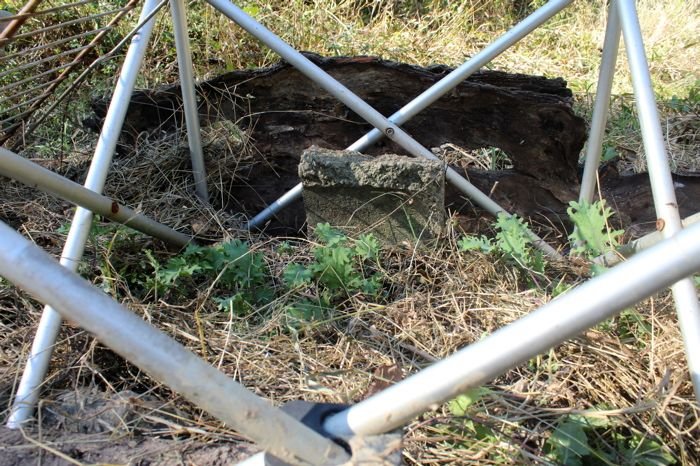
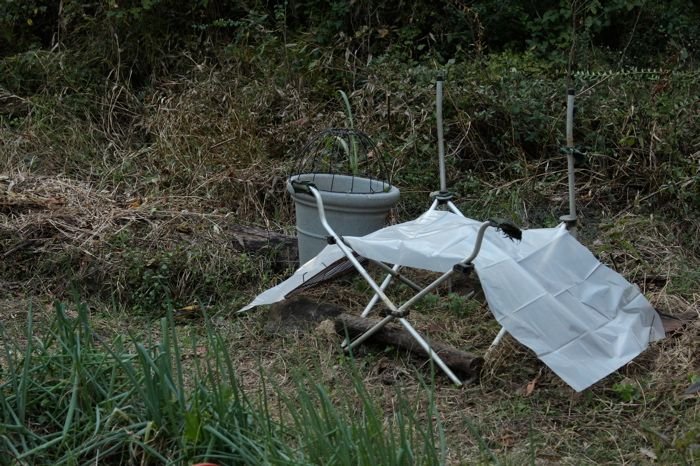
The chair frame will have to be finished later, this cover will protect the plants from the frost for now. Meanwhile. the chard house was next on the project list.
Chard House
This one's frame is made from an old salvaged bed frame, jammed into the ground. On the left side in this frame is a broccolini plant from last year-- I don't know if it's going to try to flower again, but I covered it just in case it decides to produce more.
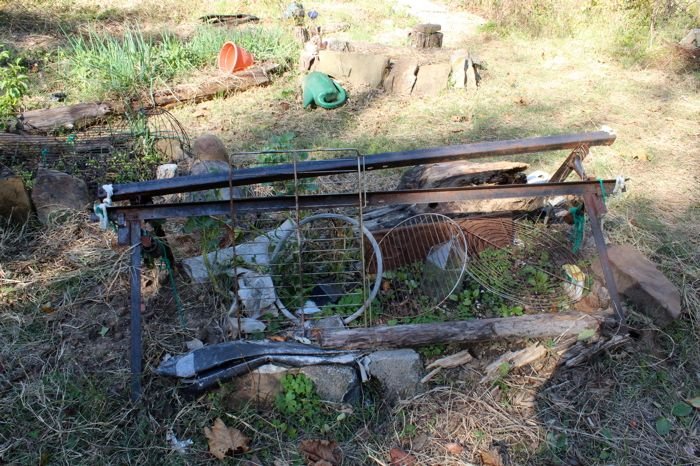
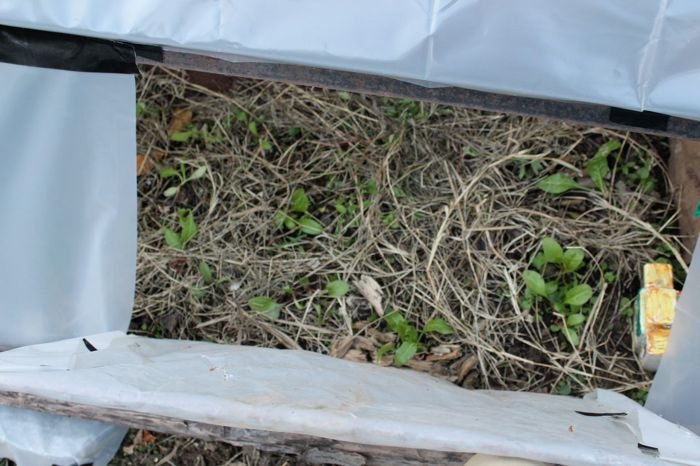
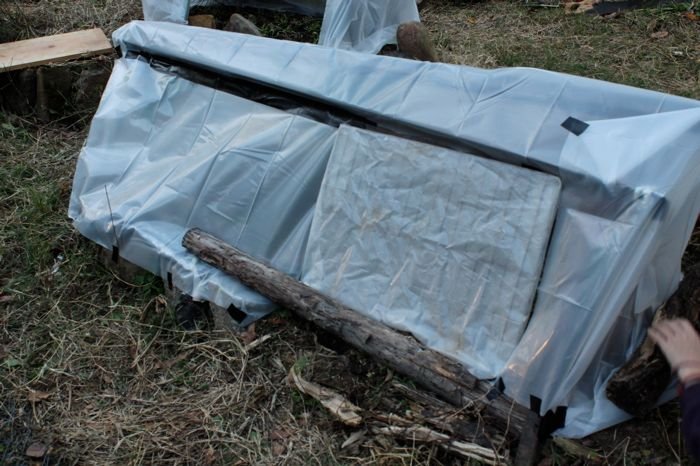
Ready for the Frost
Below, a photo of the garden before dark, facing East. With the exception of the camping-chair kale house on the left, all of the houses are mostly finished, and are certainly ready for a frost before I seal them up and fine tune the plastic wrap.
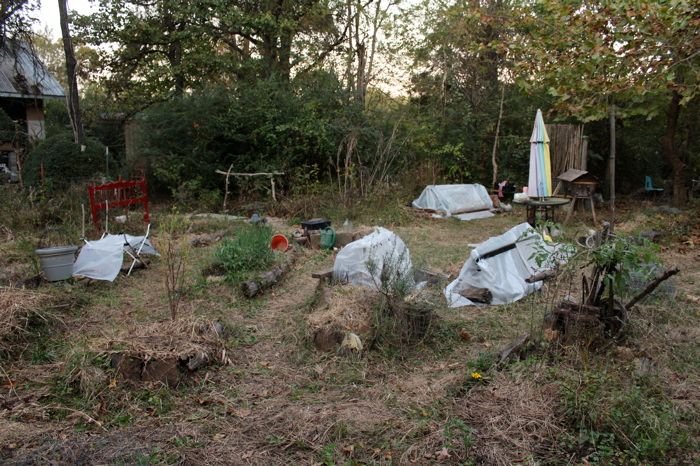
Passive Solar Design
All of these structures face south with their plastic fronts, with rocks and dense bricks in the back-- the northern side-- to gather the sun's infrared radiation trapped in the plastic house during the daylight, without blocking the direct ultraviolet rays to the plants.
The plants that I housed; giant noble spinach, Russian red kale and Swiss and rainbow chard are all very resilient to the cold, and these mini greenhouses and the warmth they will collect might compel the plants to grow faster through the winter.
It was one of the last warm days, perfect for building homes for the garden vegetables, and while they might not be pretty to look at, they give me a sense of comfort knowing that we'll have fresh greens through much of the winter from these little greenhouses. They were simple to build, and made of materials that were laying around already. The seeds were a few years old, I only bought a new roll of plastic this year, everything else was free.
- roll of plastic sheeting, $16
- 3 packs heirloom seeds, $7
- fresh greens all winter, priceless!


